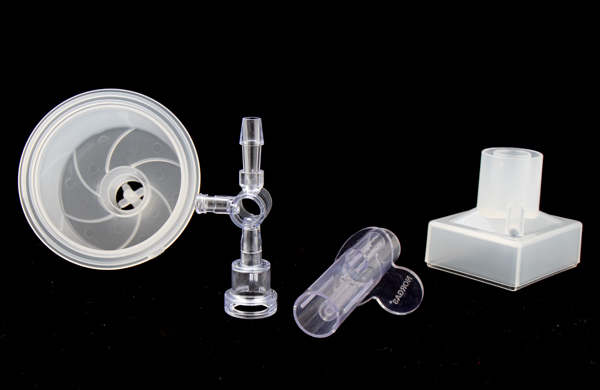What is a Black Spot?
A black spot refers to the black patches or stripes that appear on molded products.
Causes of Black Spots on Injection Molded Parts:
Resin Decomposition
Plastics, as chemical substances, gradually decompose when heated above their melting point. The higher the temperature and the longer the duration, the faster the decomposition proceeds. Additionally, there are areas within the barrel that tend to retain resin, such as the non-return valve and thread. Resin residue in these parts can be burned or carbonized, subsequently mixing into the molded product and causing black spots.
Insufficient Cleaning
Residual resin from previous uses, due to inadequate cleaning, can also lead to black spots. As mentioned, areas like the retaining ring and thread are prone to resin accumulation. Therefore, during material changes, these areas must be cleaned with appropriate force and duration. Moreover, a cleaning method suitable for each material must be adopted. Cleaning similar resins is relatively easy, but when cleaning different types of materials, complete removal may not be achievable due to differences in melting or decomposition temperatures and resin compatibility.
Foreign Matter Contamination
Contamination is another cause of black spots. Mixing particles from the feed hopper with other resins that have lower decomposition temperatures can easily lead to black spots due to resin decomposition. Furthermore, attention should be paid to recycled plastics. This is because recycled plastics are more prone to decomposition after multiple heating cycles. Additionally, they may be contaminated with metals during the recycling process.

Solutions to Black Spots in Injection Molded Parts:
Thorough Cleaning Until Black Spots Disappear
Black spots tend to accumulate in the retaining ring and twist in the barrel. If black spots appear, it is estimated that the cause is likely to be retained in the barrel. Therefore, after the appearance of black spots, the barrel must be thoroughly cleaned, and countermeasures must be taken (otherwise, the black spots will never disappear).
Attempt to Lower Resin Temperature
Each resin comes with recommended temperature usage (this information is also included in product catalogs or packaging). Check if the set temperature of the molding machine exceeds this range. If so, lower the temperature. Additionally, the temperature displayed on the molding machine is the temperature of the area where the sensor is located, which may differ from the actual resin temperature. If possible, it is recommended to use a resin thermometer or similar tool to measure the actual temperature. Particular attention should be paid to the temperature near areas prone to resin retention, such as the non-return ring.
Reduce Residence Time
Even if the set temperature of the molding machine is within the recommended temperature range for various resins, long-term retention may still lead to resin degradation and subsequent black spots. If the molding machine offers a delay setting function, make full use of it, and choose an injection molding machine suitable for the mold size.
Check for Contamination
Occasional mixing of other resins or metals may also cause black spots. Surprisingly, the main cause is often insufficient cleaning. Thoroughly clean and remove the resin used in the previous injection molding process before proceeding with the next task. When using recycled plastics, check for the presence of foreign matter in the particles.